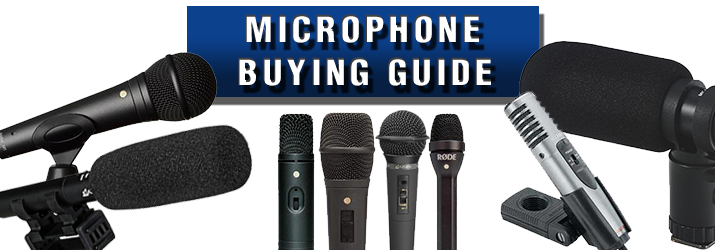Introduction
A good quality microphone can make a world of difference to the audio in your videos. As a user, you want to capture audio quality that is clean and clear. There are a variety of microphones in the market and choosing the right mic for the appropriate purpose is very important. For instance, audio recorded on a camcorder cannot stand up to the voice quality of standalone mics. Therefore, before you buy a microphone, it is important to understand the basics of microphones.
Purpose of the Guide
First, it is important for you to know exactly what kind sound you wish to achieve. Depending on that, a choice may be made from the numerous available options. There are many options to choose from in the market from dynamic microphones and ribbon microphones, to condensers and wireless mics, to hands free microphones. Factors like weight, dimension, output impedance, power requirements, and frequency response are some factors that play a huge role in determining a suitable microphone for you. This guide will help you understand all of these aspects and more.
What are Microphones?
Microphones are a necessity in virtually all audio systems. These devices convert acoustic sounds to an electric signal where the current and the voltage are proportional to the original sound. Microphones are built with a diaphragm that works just like the human ears. When a sound is generated, sound waves strike the diaphragm which causes electrical variance. This sound from the microphones can be brought forward through the means of amplifiers, PA systems, sound mixers, and audio recorders.
Features of Microphones
All microphones have some common basic features:
Polar Patterns
Polar pattern is the area around the microphone from which sounds are recorded. Omnidirectional microphones record sound from any direction. Uni-directional microphones record from only one side and nothing else. Bi-directional microphones record from two opposite sides and nothing else. Unidirectional microphones come in three patterns: cardoid, supercardoid, and hypercardoid. Cardoid microphones are most sensitive to sound in front of the microphone, less sensitive to the sides, and don't record anything from the back. Supercardoid has a similar pattern but records from a narrower field. Hypercardoid records the same pattern as cardoid and supercardoid but in an even narrower field.
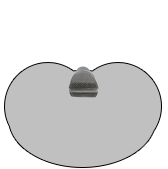
Cardioid
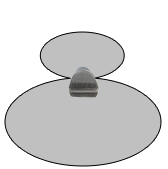
Hyper-Cardioid
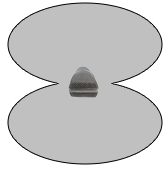
Bi-Directional
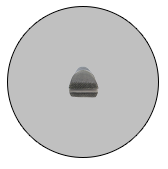
Omni-Directional
Multi-Pattern Microphones
Some microphones are highly versatile. Their multi-pattern features allow their polar patterns to be changed due to their interchangeable capsules. This feature gives the mic an added versatility.
Frequency Response
The range of frequency from high to low that the microphone will pick up is known as its frequency response. This range is measured in hertz (Hz) and is referred to by its lowest and highest frequencies.
Sensitivity and SPL-Handling Capability
The quieter the sounds the microphone is capable of detecting is known as its sensitivity. The lower the number, the more sensitive the microphone is. Sound pressure level, or SPL, is the maximum volume that a microphone can handle. It is measured in decibels (dBs).
Proximity Effect
When moving closer to the mic, the bass frequencies are increased; this is known as the Proximity effect. This can be manipulated by the user to infuse effects. A recording engineer might select a mic with a strong proximity effect for close recording an instrument to bring out its bass tones. Condenser mics produce a greater proximity effect than dynamic mics.
Utilities of Microphones
The utility of each microphone depends upon their type. A Dynamic Microphone is usually sturdy and comes with a high SPL-handling capacity. They tend to do very well in live sounds and recording situations. Ribbon Microphones, on the other hand, are fragile and are also usually used for studio work. Wireless microphones offer a high range of mobility, as they are not restricted by attached wires. A good quality wireless mic will provide the user with optimal audio quality while also eliminating noise and signal dropouts. Condenser Microphones are microphones that are also used heavily in recording. These microphones consume phantom power supply, external power supply and internal batteries by the mixer input.
Top 5 Manufacturers
Azden are manufacturers of high end audio equipment like microphones, mixers, wireless systems and more. For audio, they offer numerous choices from professional microphones, shotgun microphones, DSLR mics, and headset microphones.
Canon is one of the forerunners in the roll-out of imaging and optical products, but they also produce some of the finest microphones. They are well known for their DSLR microphones.
Based in Germany, Sennheiser is one of the leading manufactures of a wide range of both consumer and high quality products like telephone accessories, and avionics headsets, microphones, and headphones.
Sony is one of the largest multinational companies that manufacture electronic products for the consumer and professional markets. They focus their products on electronics, game, entertainment, and financial services sectors.
Based in Australia, Rode are exclusive manufacturers of high end microphones, audio software, and related accessories. They are manufacturers of a variety of high end microphones.
Terminology
- Polar Patterns:
- The direction from which the microphone accepts or ignores incoming sounds or the field of sensitivity. Microphones can be uni-directional, omnidirectional or they may be bi-directional.
- Multi-Pattern Microphones:
- The ability of certain microphones to change their polar patterns owing to their multi-pattern features is known as its multi-purpose pattern.
- Frequency Response:
- The range of frequency that a microphone can pick up is known as its frequency response.
- Response Curves:
- The shape of a microphone’s frequency responsiveness is called its response curve.
- Sensitivity and SPL-Handling Capability:
- The quiet sounds the microphone is capable of detecting is known as its sensitivity. The maximum volume that a microphone can handle is known as its SPL, or the sound pressure level.
- Proximity Effect:
- The increase in the bass level frequencies on moving closer to the microphone is known as its proximity effect.
